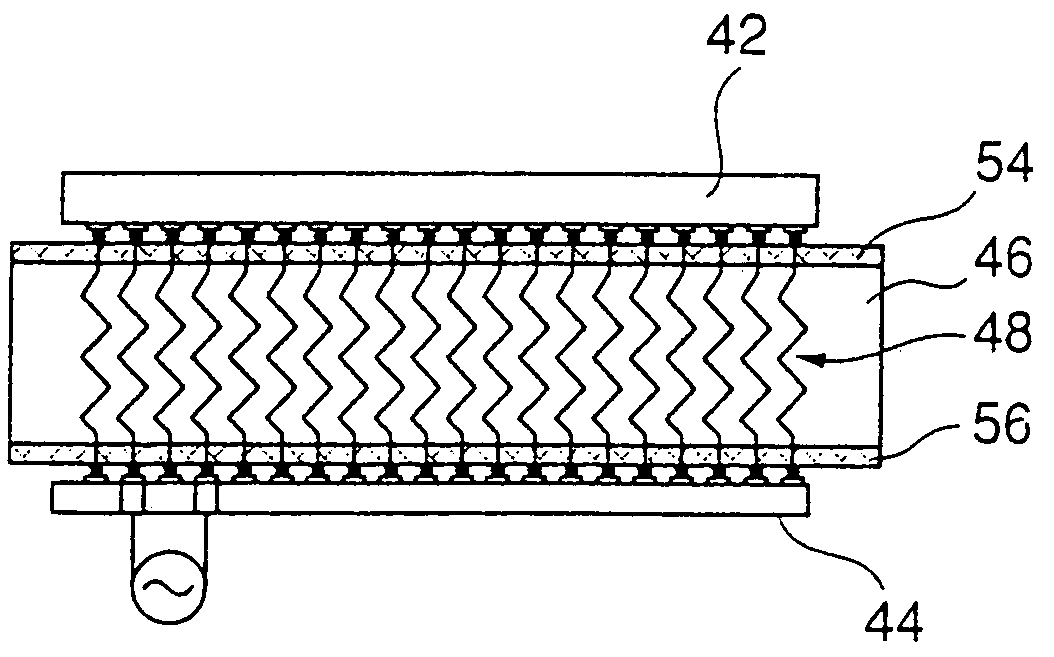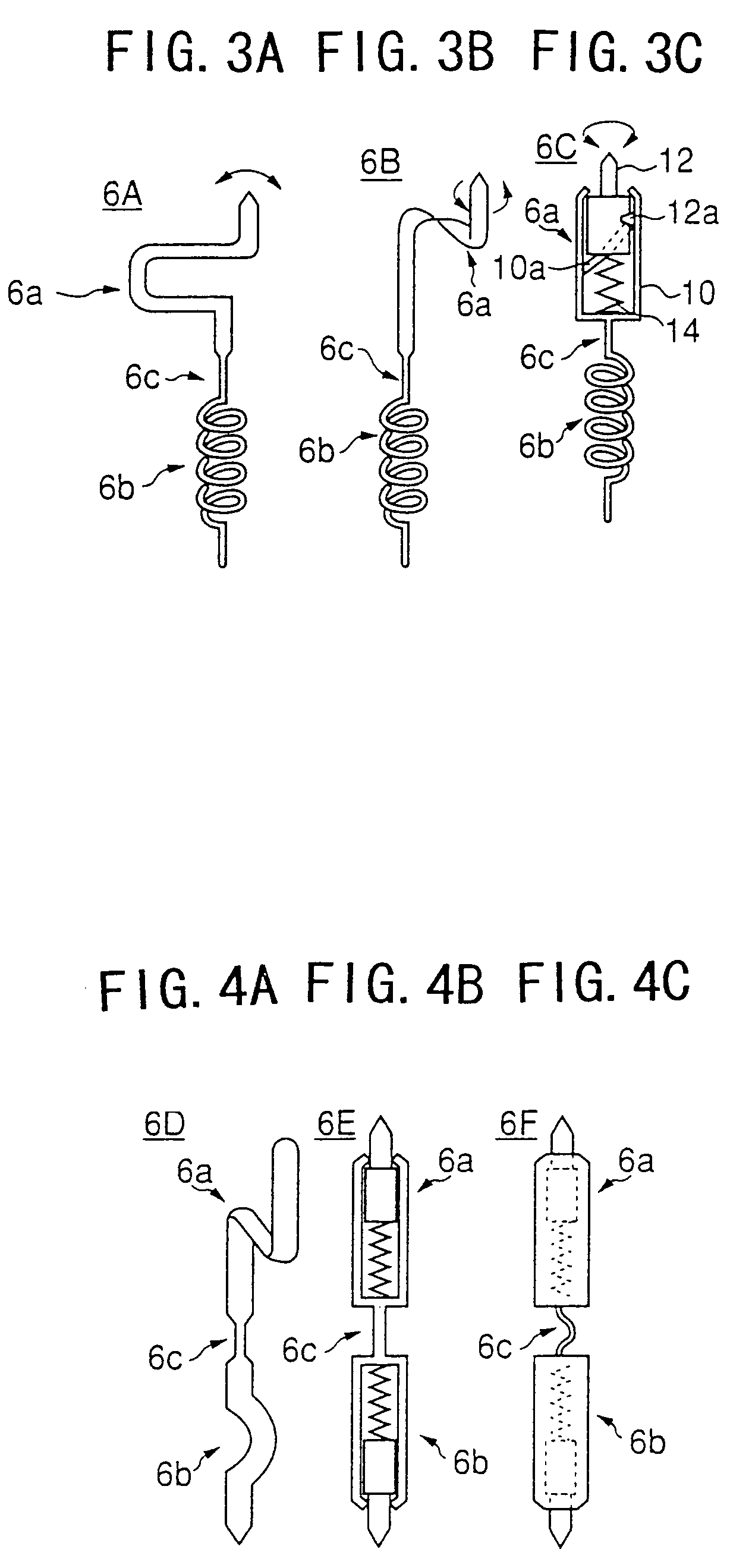Contactor having contact electrodes of metal springs embedded in a plate-like structure
a contactor and metal spring technology, applied in the field of contactors, can solve the problems of high manufacturing cost of the contactor, inability to form contact electrodes for adjacent lsi, and difficulty in using an lsi having area array terminals
- Summary
- Abstract
- Description
- Claims
- Application Information
AI Technical Summary
Benefits of technology
Problems solved by technology
Method used
Image
Examples
second embodiment
[0116]FIGS. 8A and 8B show a basic structures of a contact electrode according to the present invention. FIG. 8A shows a contact electrode 6J in which the LSI-side contact electrode part 6a and the test-board-side contact electrode part 6b are protrudingly formed from a conductive part 8c of the contactor substrate 8. In order to manufacture the contact electrode 6J, the conductive part 8c extending though the contactor substrate 8 is formed first. Then, a part serving as the LSI-side contact electrode part 6a is formed on one side of the conductive part 8c by copper plating or the like, and a part serving as the test-board-side contact electrode part 6b is formed on the opposite side of the conductive part 8c by copper plating or the like. Here, the conductive part 8c corresponds to the connecting part 6c.
[0117]In the contact electrode 6J shown in FIG. 8A, since growth formation is carried out by the plating method so as to form the LSI-side contact electrode part 6a and the test-...
sixth embodiment
[0151]Next, a description will be given of a contactor according to the present invention.
[0152]FIG. 23 shows a contactor 40 according to the sixth embodiment of the present invention. In FIG. 23, a contactor 40 is arranged between an electronic part 42 (an object to be contacted) such as an LSI and a test board 44 so as to electrically connect the electronic part 42 to the test board 44. The test board 44 is provided with a circuit for testing the electronic part 42, and the electronic part 42 is subjected to a burn-in test or a final test in a state where the electronic part 42 is connected to the test board 44 via the contactor 40.
[0153]The contactor 40 comprises a base 46 formed of an insulating material and a plurality of contact electrodes 48 which penetrate and extend through the base 46. The base 46 is formed in the shape of a plate, and has a surface 46a (first surface), which is arranged to face the electronic part 42, and a surface 46b (second surface), which is arranged ...
PUM
 Login to View More
Login to View More Abstract
Description
Claims
Application Information
 Login to View More
Login to View More - R&D
- Intellectual Property
- Life Sciences
- Materials
- Tech Scout
- Unparalleled Data Quality
- Higher Quality Content
- 60% Fewer Hallucinations
Browse by: Latest US Patents, China's latest patents, Technical Efficacy Thesaurus, Application Domain, Technology Topic, Popular Technical Reports.
© 2025 PatSnap. All rights reserved.Legal|Privacy policy|Modern Slavery Act Transparency Statement|Sitemap|About US| Contact US: help@patsnap.com



